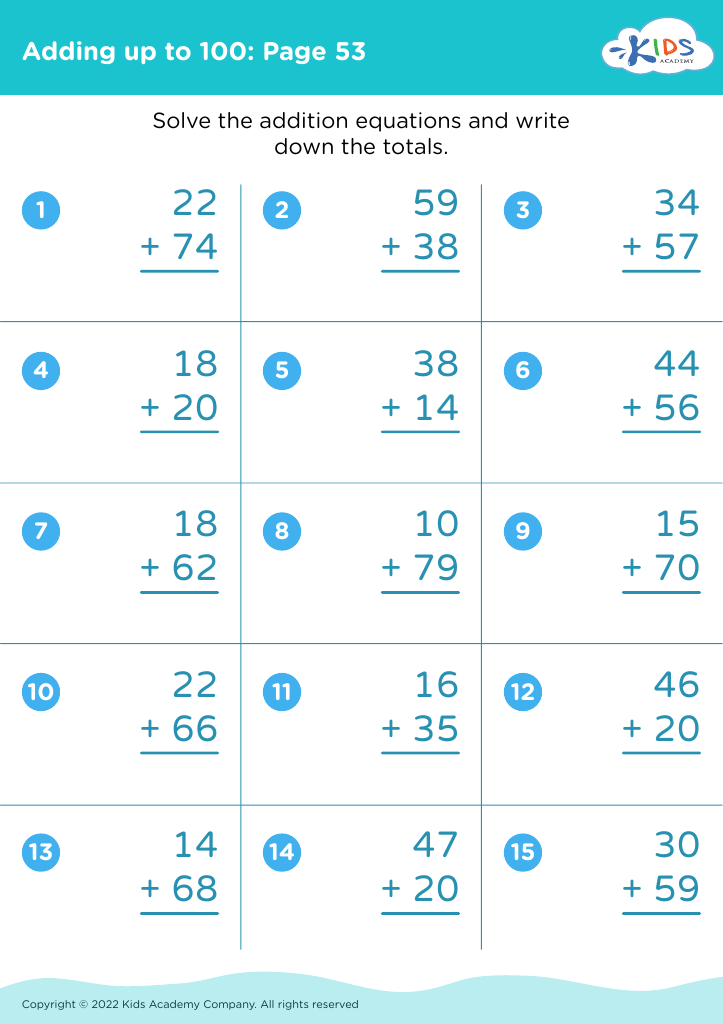Fraction simplification Adding up to 100 Misc Worksheets for Ages 8-9
6 filtered results
-
From - To
Explore our comprehensive collection of "Fraction Simplification and Adding Up to 100 Misc Worksheets" designed for children aged 8-9. These engaging worksheets provide a fun and effective way for young learners to master fraction simplification while enhancing their addition skills. With a variety of problems and exercises, students will build a strong foundation in fractions, improving their math confidence. Each worksheet is crafted to encourage critical thinking and problem-solving, making math enjoyable. Perfect for classroom activities or at-home learning, these resources help children develop essential skills in a captivating way. Start your child's math journey today!
Understanding fraction simplification is essential for children aged 8-9, as it lays a foundation for more complex mathematical concepts they will encounter later. Fractions are fundamental in daily life, from cooking to sharing and budgeting. When students learn how to simplify fractions, they develop critical thinking and problem-solving skills that are paramount in both academic settings and real-world situations.
Adding fractions that total 100 is a practical exercise that intuitively teaches students about the relationship between numbers. This not only reinforces the concept of fractions but also highlights the importance of understanding quantitative relationships—skills that are vital for mathematical literacy. These exercises help students cultivate a sense of numerical flexibility, allowing them to see patterns and make connections that deepen their understanding of math as a cohesive subject.
Moreover, when parents and teachers prioritize these skills, they empower children to approach math with confidence. This is crucial at an age when attitudes toward math begin to solidify. By integrating fun, engaging activities involving fraction simplification and addition, adults can foster a positive learning environment, encouraging both enthusiasm and comprehension in young learners. Ultimately, mastering these foundational skills will serve them well as they progress in their education.





















